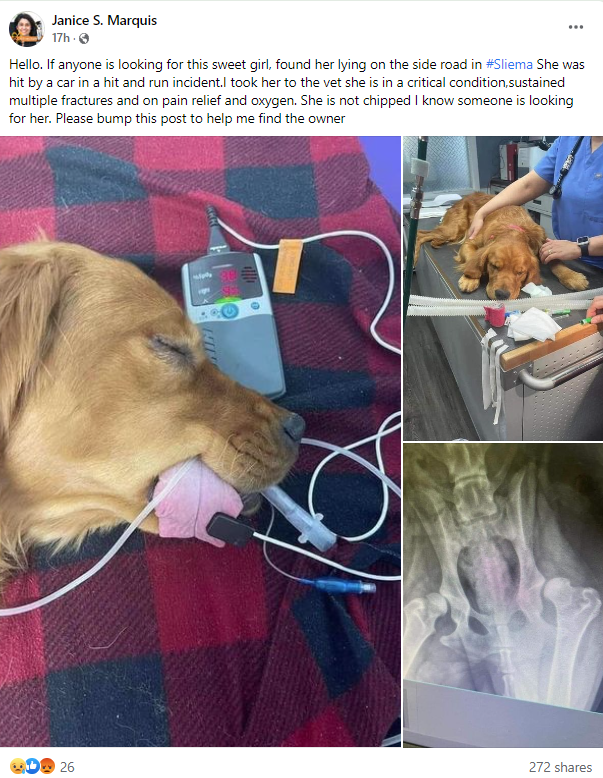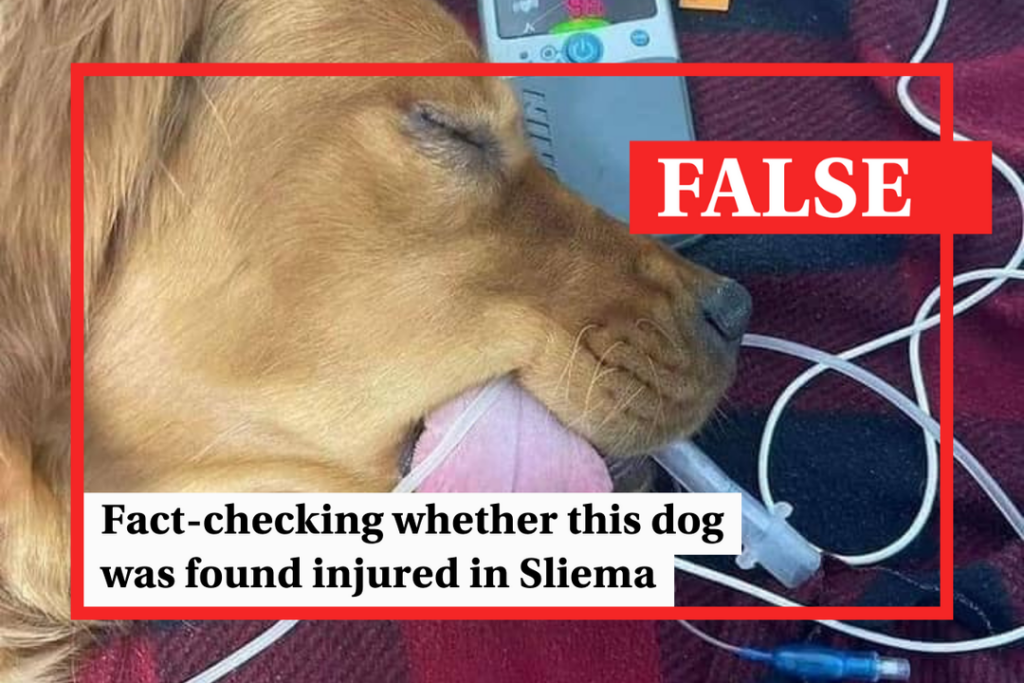A Facebook post calling for help to find the owner of an injured dog was widely shared on Tuesday 2nd May, with hundreds of people reposting it to their own pages and wishing the dog a speedy recovery.
However, the post is simply the latest in a series of online scams involving hoax posts designed to be as widely disseminated as possible.
What does the post say?
The post was shared in a local Facebook group advertising rental accommodation. This is not the first time scammers have targeted this group to share similar posts.
The post says the dog was the victim of a hit and run, found “lying on the side of the road” in the seaside town of Sliema, having sustained “multiple fractures”. Two photos of the injured dog being treated and seemingly receiving oxygen are presented alongside the post, together with a generic photo of an X-ray.
“Please bump this post to help me find the owner”, the post concludes.
The post was shared almost 300 times at the time of publication, with several well-intentioned users also sharing it with local missing pets online groups.

Photos date back to early April
A reverse image search shows that the photos used in the post did not originate in Malta and have previously been shared online in several other posts on Facebook, Twitter and Instagram.
The text used for each post is almost identical, always describing the dog as the victim of a hit and run and appealing for help to find its owner. The location where the dog was allegedly found is always altered depending on the post’s target audience.

These hoax posts were initially shared across several towns in the USA, before making their way to Europe and, eventually, Malta.
The original photos can be traced back to a veterinary clinic called Animal House Veterinary Clinic based in Nashville, USA. They were first used in a post on 3rd April alongside photos and videos of several other dogs treated by the clinic.

A post shared by the clinic on 27th April warns its customers that photos of the dog had been taken from their Facebook page and were being widely used in online scams. According to the post, the dog had been treated at the clinic for a spay procedure and is now at home “doing just fine”.

How does the scam work?
This is an example of a hoax post designed to be as widely shared as possible by appealing to readers’ empathy and asking for their help in locating somebody.
Similar hoax posts often involve missing children, older adults or other pets. Times of Malta recently debunked a similar post which asked for people’s help in finding the parents of a young child.
These hoaxes work by encouraging the public to disseminate a post as widely as possible. Once it has been shared several hundred times, the scammer returns to the post and edits it to advertise a scam designed to steal personal data such as credit card details, addresses or other personal information.
These may include false adverts promoting crypto apps, property listings, pyramid schemes or freebies.
In this way, the false adverts appear to be legitimate, simply because they have been shared or liked hundreds of times. By appearing to be so popular, they are more likely to dupe unsuspecting people into falling for the scam.
How can you spot a hoax?
Close observation of such posts often reveals several tell-tale signs suggesting that the post may be a hoax.
- The post appears to have been posted by a fake profile. Examining the profile of the person who posted may reveal that it is a brand new account that has never posted before and does not have any connections to other genuine social media accounts.
- Comments have been disabled. This is often done to prevent other users from commenting to warn people that the post is a hoax.
- The text in the post has unusual spelling or formatting, suggesting that the text may have been copied from elsewhere or somehow altered.
- The photo does not appear to be genuine or may have been used before. Carrying out a reverse image search often reveals whether the image has been used before.
Verdict
The images used in the post are not of a dog found injured in Sliema.
The photos were originally posted by a veterinary clinic in Nashville, USA. The dog in the image had been spayed by the clinic and is now safe with its owner.
The post is the latest in a series of similar hoaxes designed to be as widely shared as possible.
The claim is therefore false as the evidence clearly refutes it.
The Times of Malta fact-checking service forms part of the Mediterranean Digital Media Observatory (MedDMO) and the European Digital Media Observatory (EDMO), an independent observatory with hubs across all 27 EU member states that is funded by the EU’s Digital Europe programme. Fact-checks are based on our code of principles.
Let us know what you would like us to fact-check, understand our ratings system or see our answers to Frequently Asked Questions about the service.





